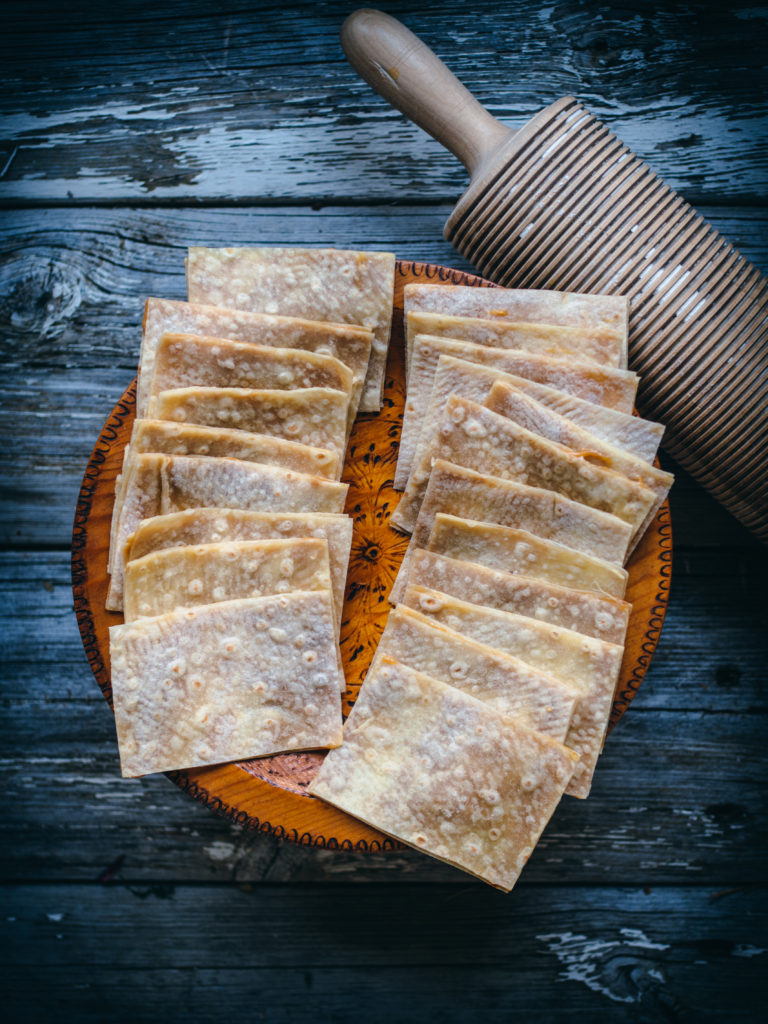
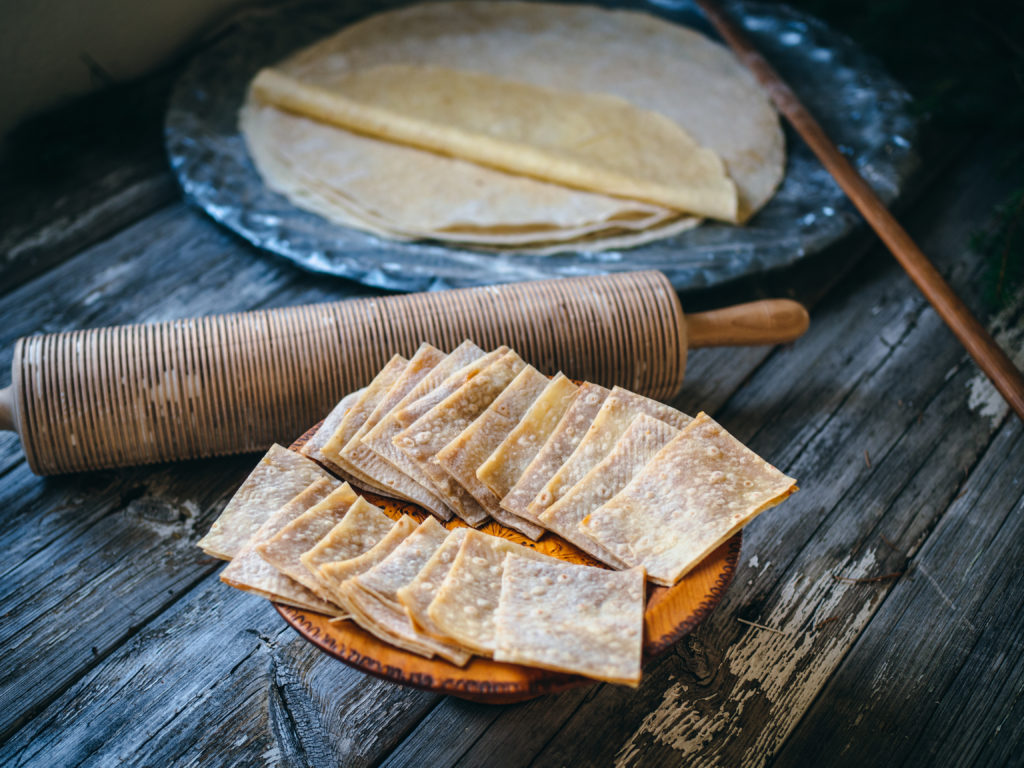
Lefse is a kaleidoscope of recipes, similar and yet distinct, each with a story and a commonality spread across Norway and beyond its borders. From handwritten notes to books, lefse can fill the pages and leave anyone intrigued and fascinated at the variations, even from neighbor to neighbor. It’s almost impossible to capture the range and depth of recipes to be found, but I hope to touch on some from time to time to inspire you and bring more light to the diversity of this iconic bread.
When travelling westward toward Bergen, I always try to stop by the small village of Evanger and visit their local shop for a cup of coffee, a freshly baked loaf of bread, and to scour the local goods. One discovery I found now rests upon my kitchen shelf; a cookbook called Bygdebakst og Gommorgraut filled with local recipes from Eksingedalen written by the Eksingedalen Kvinne – og familielag. There is so much to learn about and take from this cookbook, but one of the recipes I was inspired to make and share with you is kling.
Kling from Eksingedalen is also known as Vossakling. It’s a large, thin lefse with a sweetened brunost (Norwegian brown cheese) filling. The process is quite intriguing and what first tempted me to make it at home.
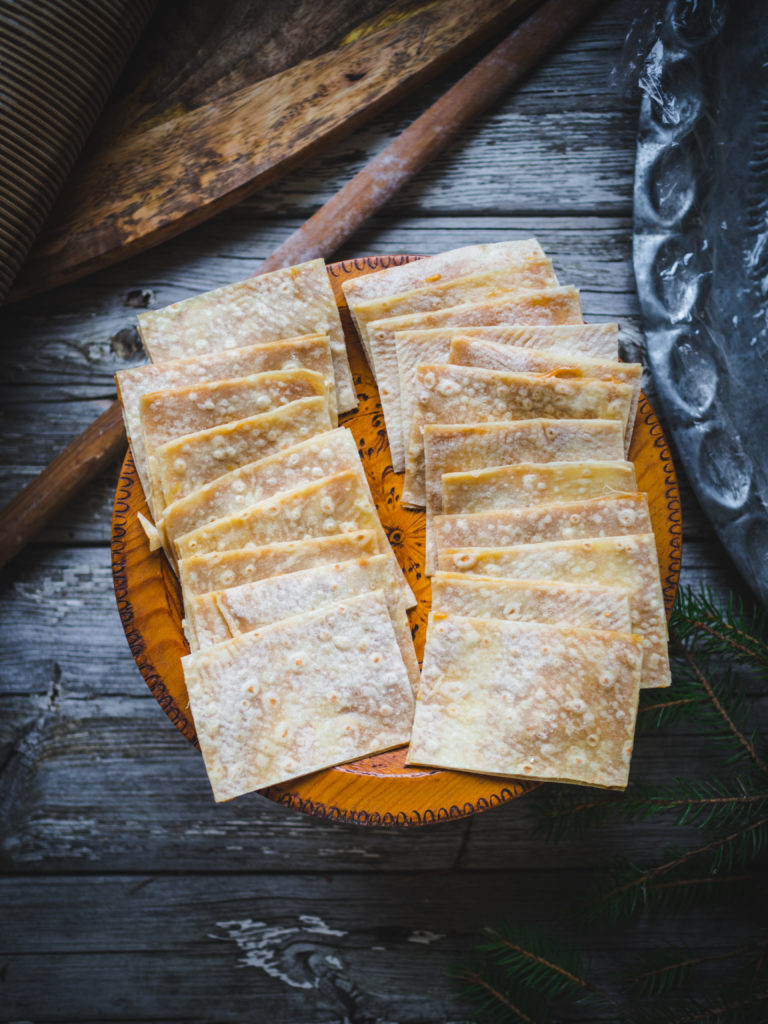
First, the ingredients are brought together to form a soft, pliable dough. The dough is then shaped into rounds before being rolled out into large, thin circles. One side of each is cooked then doused with raw milk. The uncooked sides then get their turn and are cooked until the raw milk evaporates. The lefser are stacked on one another and left to dry. They are softened again with water before receiving a good spread of butter and a topping of the brunost filling. They are folded and then cut into individual squares for serving.
Local dialect explains this process. The lefse/bread part is referred to as nekabrød, klingabrød or knekabrød. To “neka” is to spread raw milk on one side of the lefse. Smørja is the term used for the brunost filling with a taste of caramel. Once all the steps come together, you get kling – which is the finished nekabrødet with smørja.
It’s quite a process, but well worth it and easy to get a hang of it after a few times.

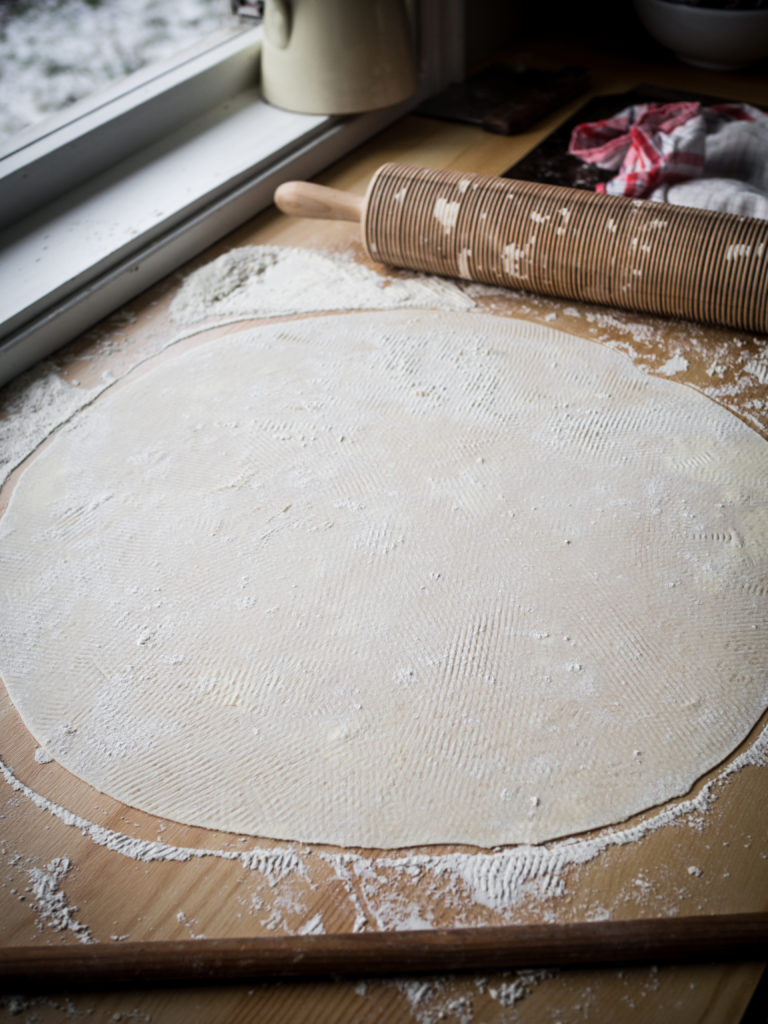
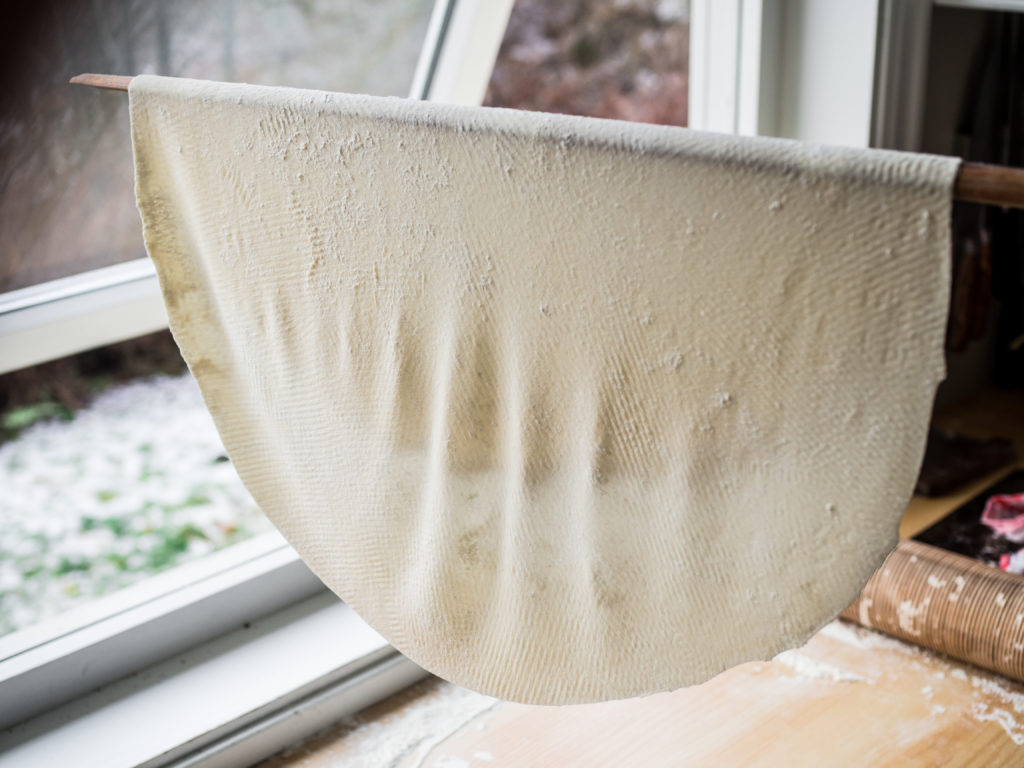
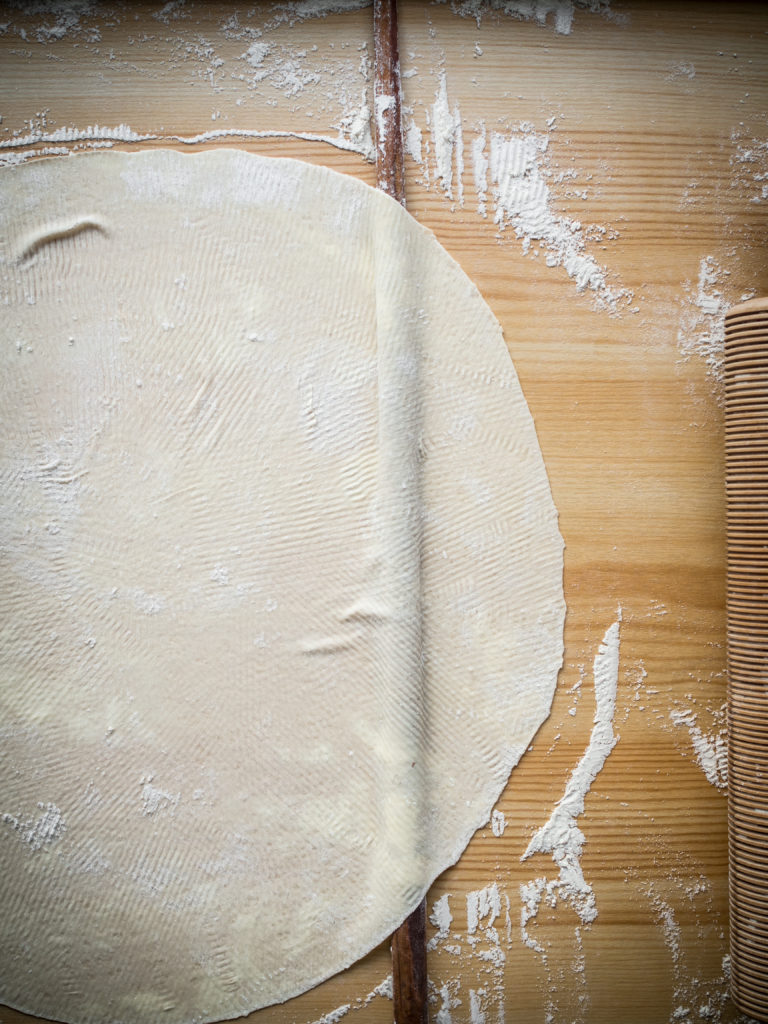
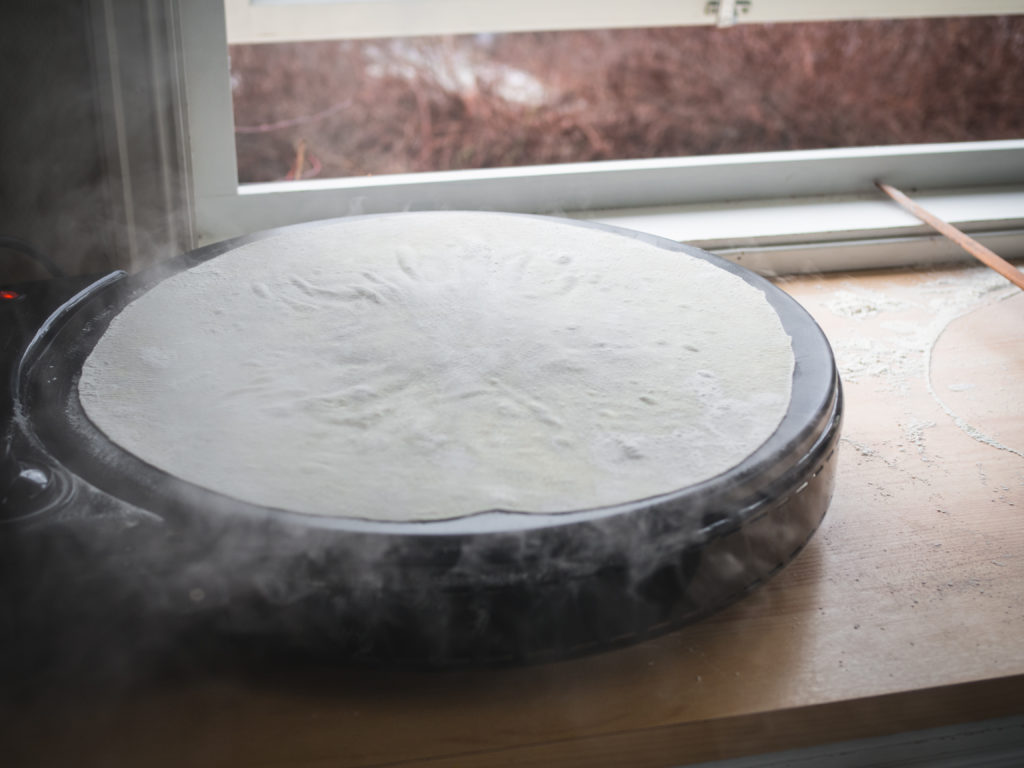
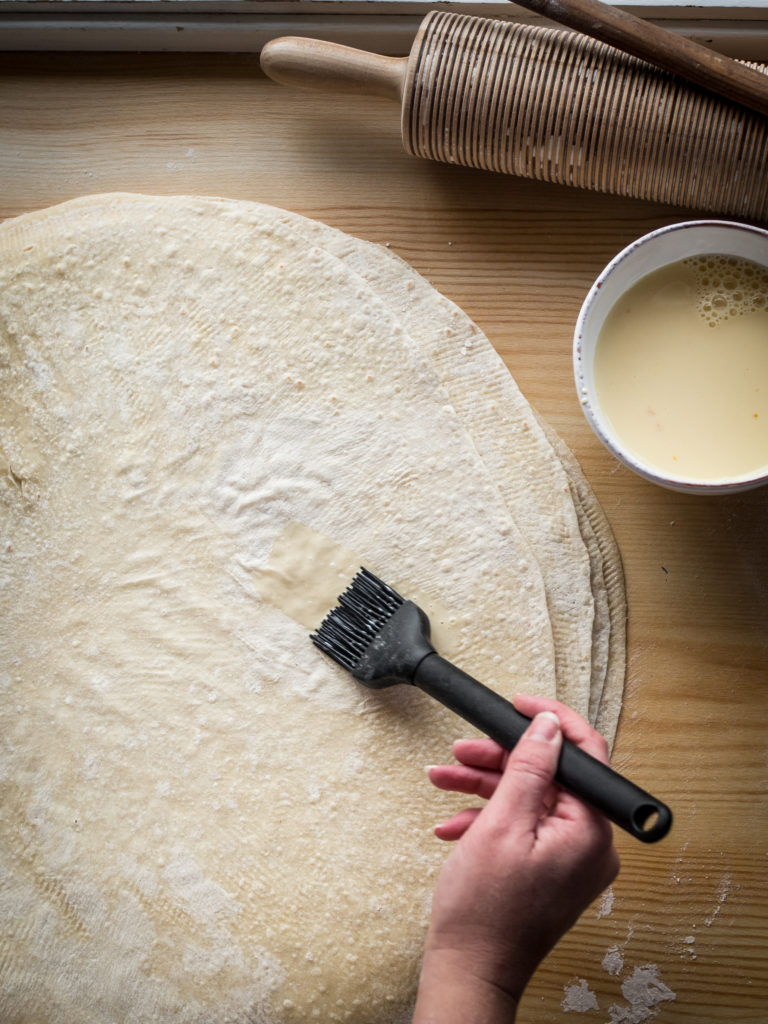
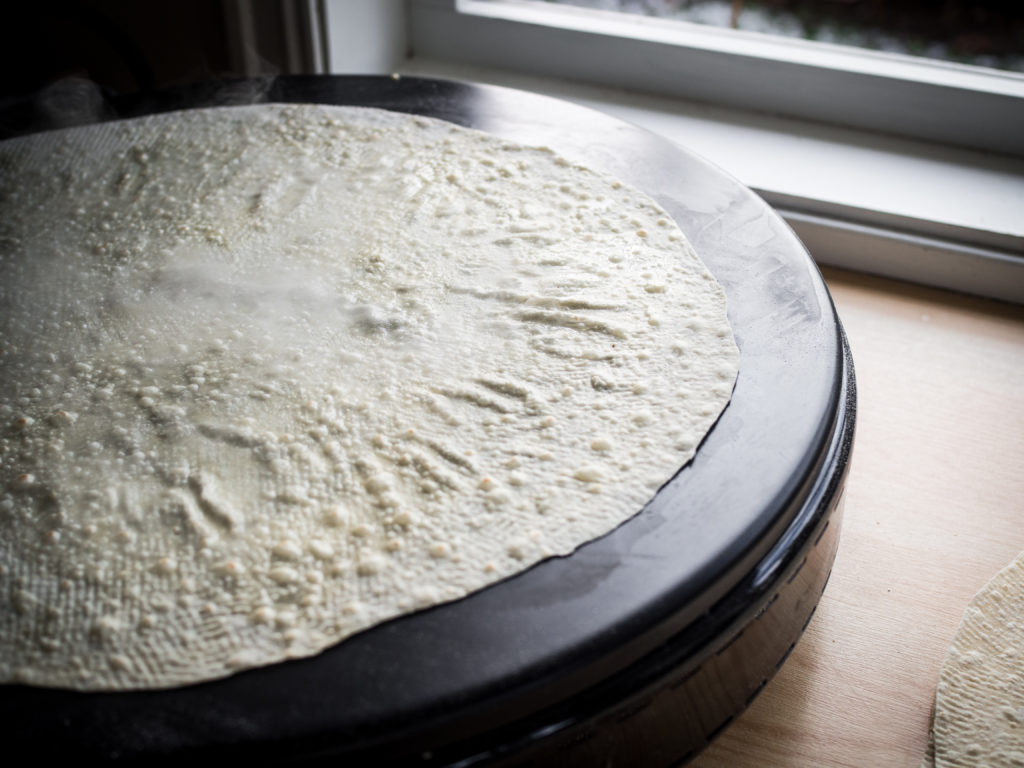
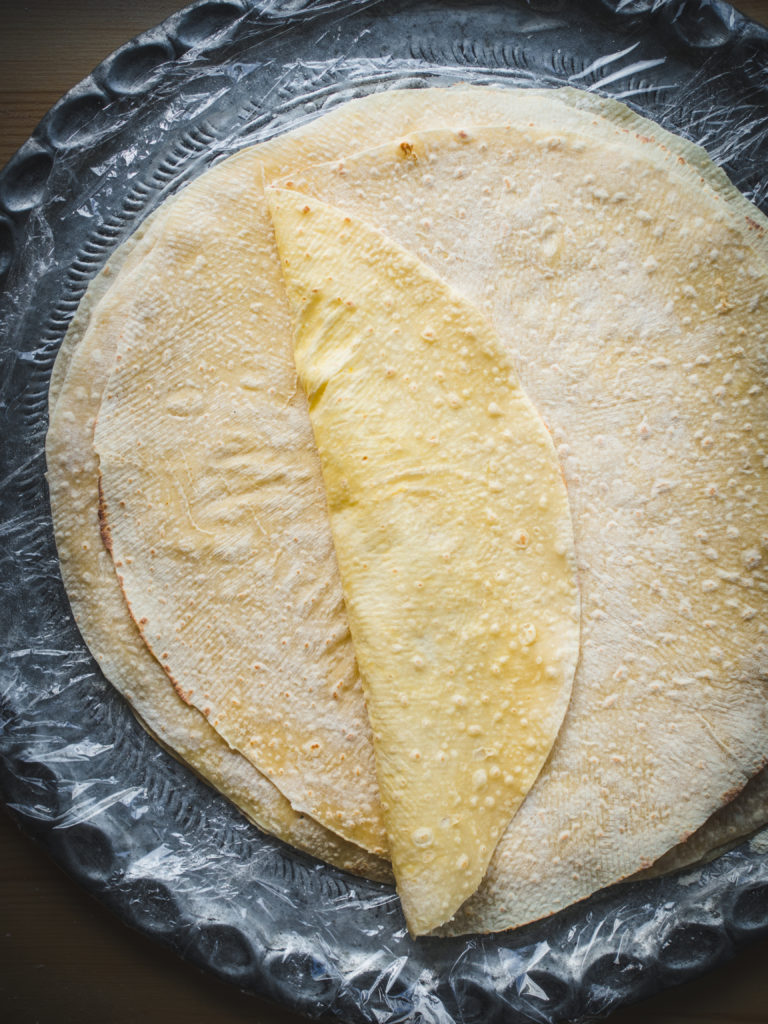
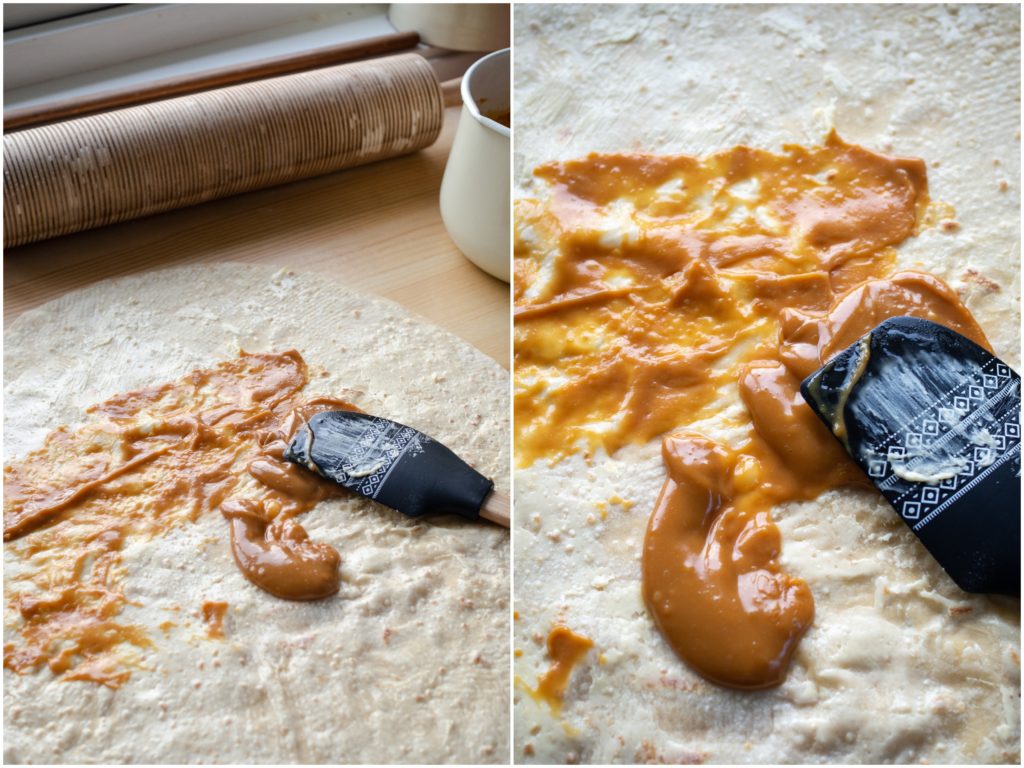
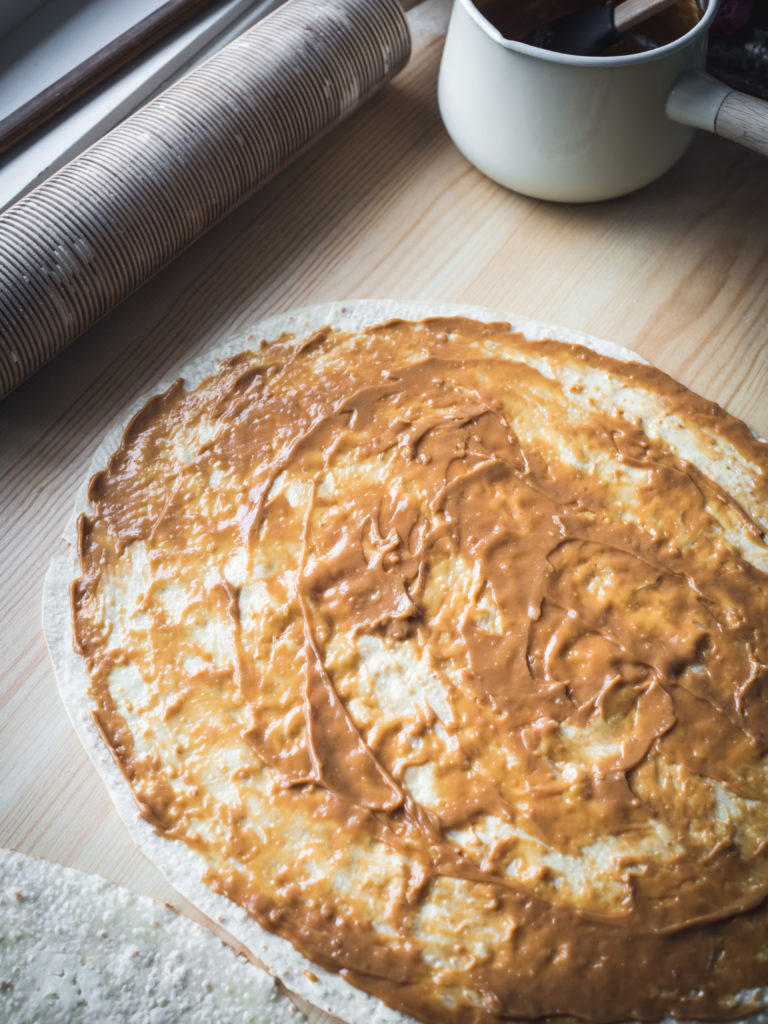
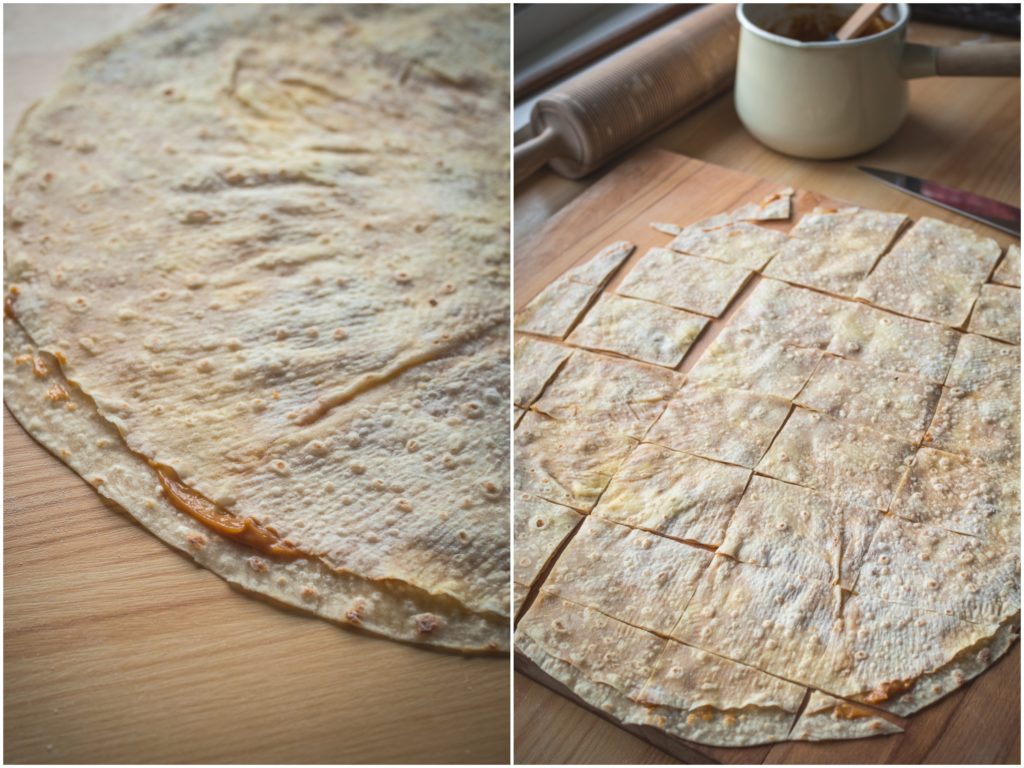

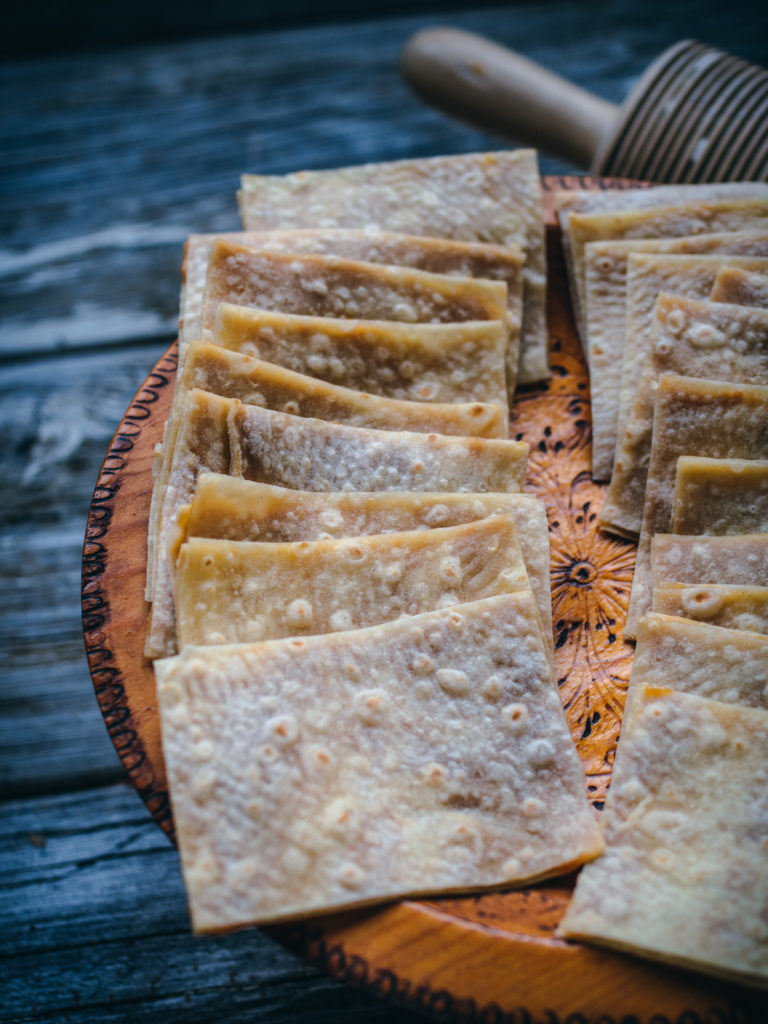
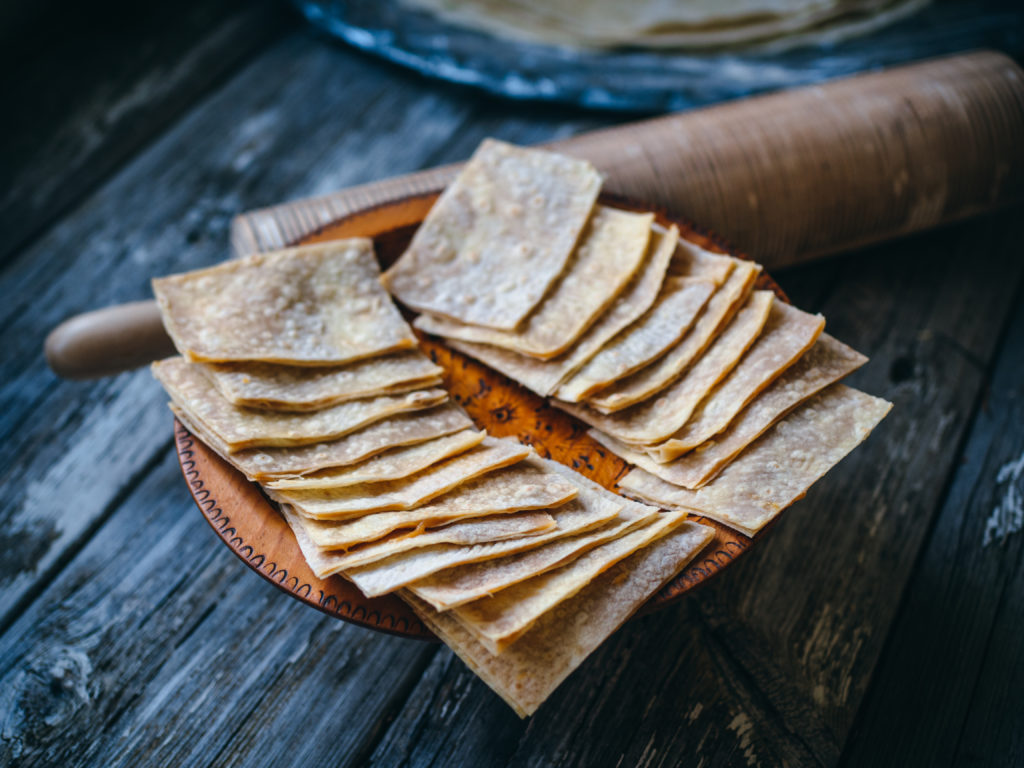
Any type of lefse baking takes some time, so plan on a good couple of hours just for the dough making and baking. I recommend using a traditional, indented Norwegian rolling pin and a wooden lefse stick to turn the dough and move it around while baking. If you don’t have, don’t worry because a regular rolling pin works as well, though it takes a little extra effort. If you can’t access a large griddle “takke“, use a dry frying pan instead and make the dough into smaller rounds using half of the weight recommended below. For more notes and helpful hints, see the bottom of the recipe.
Kling from Eksingedalen
(Inspired from the many kling recipes from Eksingedalen)
*Makes 8 lefser
For the nekabrød:
- 2 tablespoons (28 g) butter
- 2 cups plus 1 tablespoon plus 1 teaspoon (500 ml) whole milk
- 4 cups plus 2 tablespoons (500 g) all-purpose flour
- 1 tablespoon sugar
- ¼ teaspoon salt
For the wash:
- 1 cup (240 ml) raw milk
OR
- 1 egg
- 1 cup (240 ml) whole milk
For the klingasmørje:
- 8 ¾ ounces (250 g) brunost (Norwegian brown cheese)
- 1 ¼ cup (300 ml) milk
- ¾ cup (150 g) granulated sugar
- 2 tablespoons flour
- Butter at room temperature, for finishing
In a small saucepan, heat the butter and milk, over medium heat until the butter has melted, and pour into a large bowl. Add the flour, sugar and salt and combine to form a dough.
Divide the dough into 8 equal pieces, about 4.4 ounces (122 g to 125 g) each. Roll them into balls and gently press to flatten slightly. Place on a floured surface and cover with a tea towel.
On a well-floured surface, use a rolling pin and a circular motion from the center outward to roll out each round of dough into a very thin circle, about 18 inches (46 cm) in diameter; add more flour as needed to prevent sticking. Turn the dough over once or twice at the beginning, preferably with a wooden lefse stick, to prevent sticking as well. The trick is to get the lefse as thin as possible without tearing. If the dough does tear, use your fingers to press it back together. Using a soft-bristled brush, brush off any excess flour.
Heat a takke /griddle to medium-high heat. Put the fan on and open a window if possible.
Arrange a piece of plastic wrap large enough to cover the lefse in the center of a clean cloth or old sheet large enough to wrap around the lefse.
Gently place 1 lefse on the dry, hot takke and cook for 20 to 30 seconds or just until it begins to bubble on top with faint golden spots on the bottom (avoid any browning). Using a wooden lefse stick, remove and place the cooked lefse side on top of the plastic wrap and cover with a second piece of plastic. Fold the sheet over the plastic to keep the lefse soft and moist. Brush any excess flour from the takke so it doesn’t burn. Continue cooking one side of the lefse with the remaining dough. Each time you finish a lefse, open the cloth and place it on top of the others, followed by the plastic, and fold the sheet over.
Place the raw milk, if using, in a small bowl or blend together the egg and whole milk in a small bowl. Take 1 lefse with the cooked side facing upwards and, using your hands, take some of the raw milk or milk and egg blend, and spread it evenly on top of the cooked side. Return the lefse to the takke with the uncooked side down (cooked side with the milk upwards, not touching the takke) and cook for 30 seconds or until the milk begins to evaporate and light spots appear on the bottom (the lefse should be pale in color when finished cooking). Quickly turn the lefse and cook the milk side for a few seconds longer. Remove and repeat with the remaining lefser, stacking them on top of each other with the milk side on the bottom.
Leave the lefser to dry and put a light weight of sorts on top to keep them flat and from curling. Some techniques suggest rearranging the lefser in the stack to get more air and prevent any moisture from settling.
When ready to serve, run lukewarm water over the dry side (the side without the milk wash). Place a kitchen towel on top of the wet side and repeat with the remaining lefser. After 15 minutes, the lefser will be soft.
In a medium saucepan, heat the brunost, milk, and sugar over medium heat until blended. Mix a little milk with the flour, add it to the brunost mixture, and cook until thickened. Set aside to cool.
Take 2 lefser, place the milk sides down, and spread a thin layer of room temperature butter all over the tops and to the edges. Take some of the brunost filling and spread it evenly and thinly across 1 of the lefse then place the other lefse on top so the butter side is on top of the brunost filling – like a sandwich. Using your fingers, gently pinch the edges together and smooth the top so it’s nice and even. Cut the kling into squares and place on a tray to serve. Refrigerate any kling leftovers for up to 5 days.
Some Notes:
- The recipes I have come across do not specifiy how long the lefser should dry for. As long as you continue to rearrange them in the stack and keep an eye on them you should have a good timeframe to work within, meaning you can prepare the lefser ahead of time and serve when ready.
- Using your hands, instead of a pastry brush, is much easier when applying the milk wash.
- Another option is to serve the kling immediately rather than letting the lefser dry out. Just keep them tucked in towels as you go along the process and they should be soft enough to serve. If not, just run a little lukewarm water on the non-milk wash side as instructed above.
- For serving, instead of placing two lefser on top of each other and then cutting, you can take 1 lefse with the butter spread and place the brunost filling on ½ of it while proceeding to fold it in half and then cutting.
- For the filling, you can add in some sour cream if you prefer a more rounded, less sweet flavor. You can also adjust the amount of sugar.
- Ensure your filling is evenly spread, so you get a perfect bite with each kling square (I did not do this for the first one as pictured above).
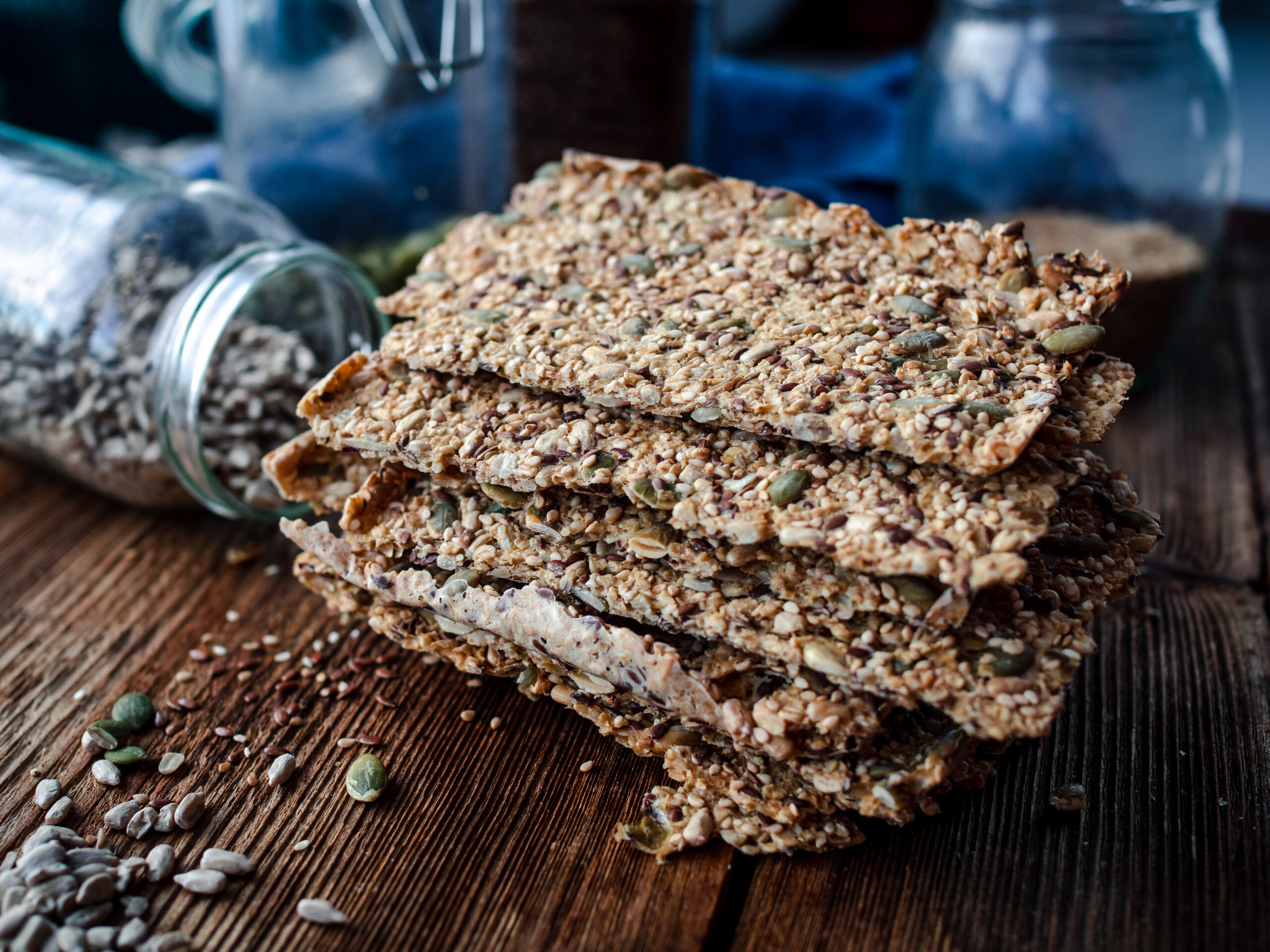
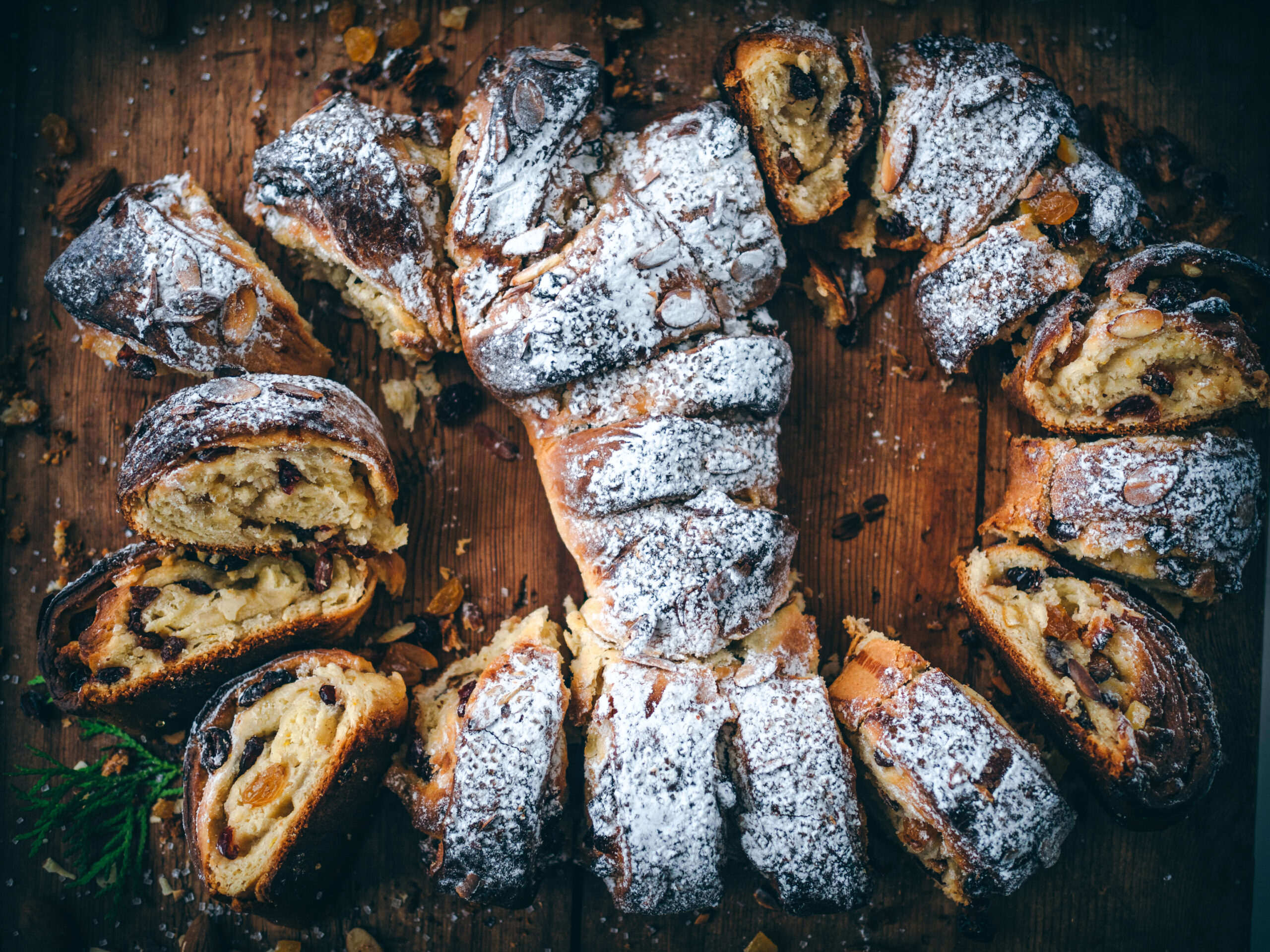
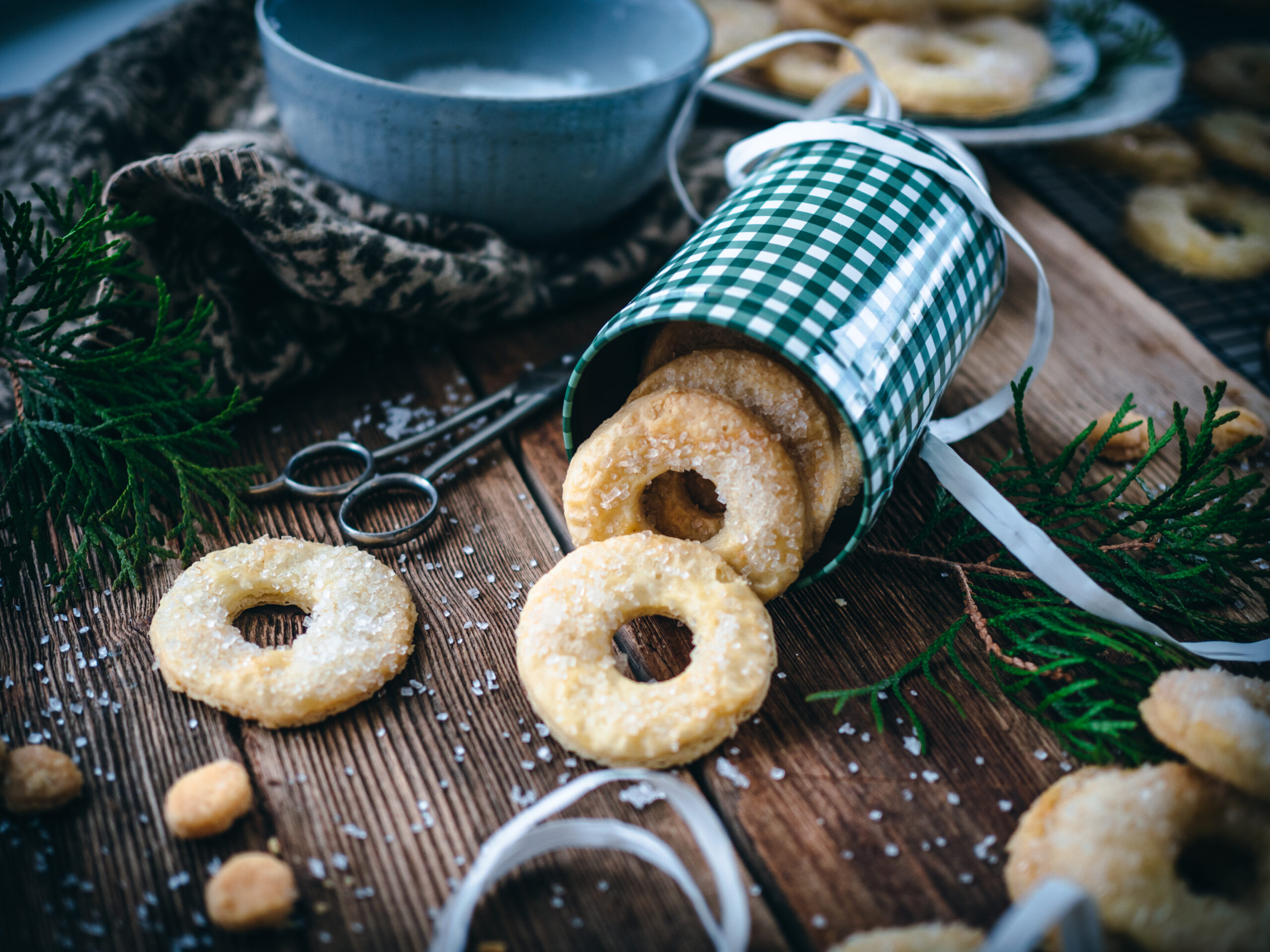
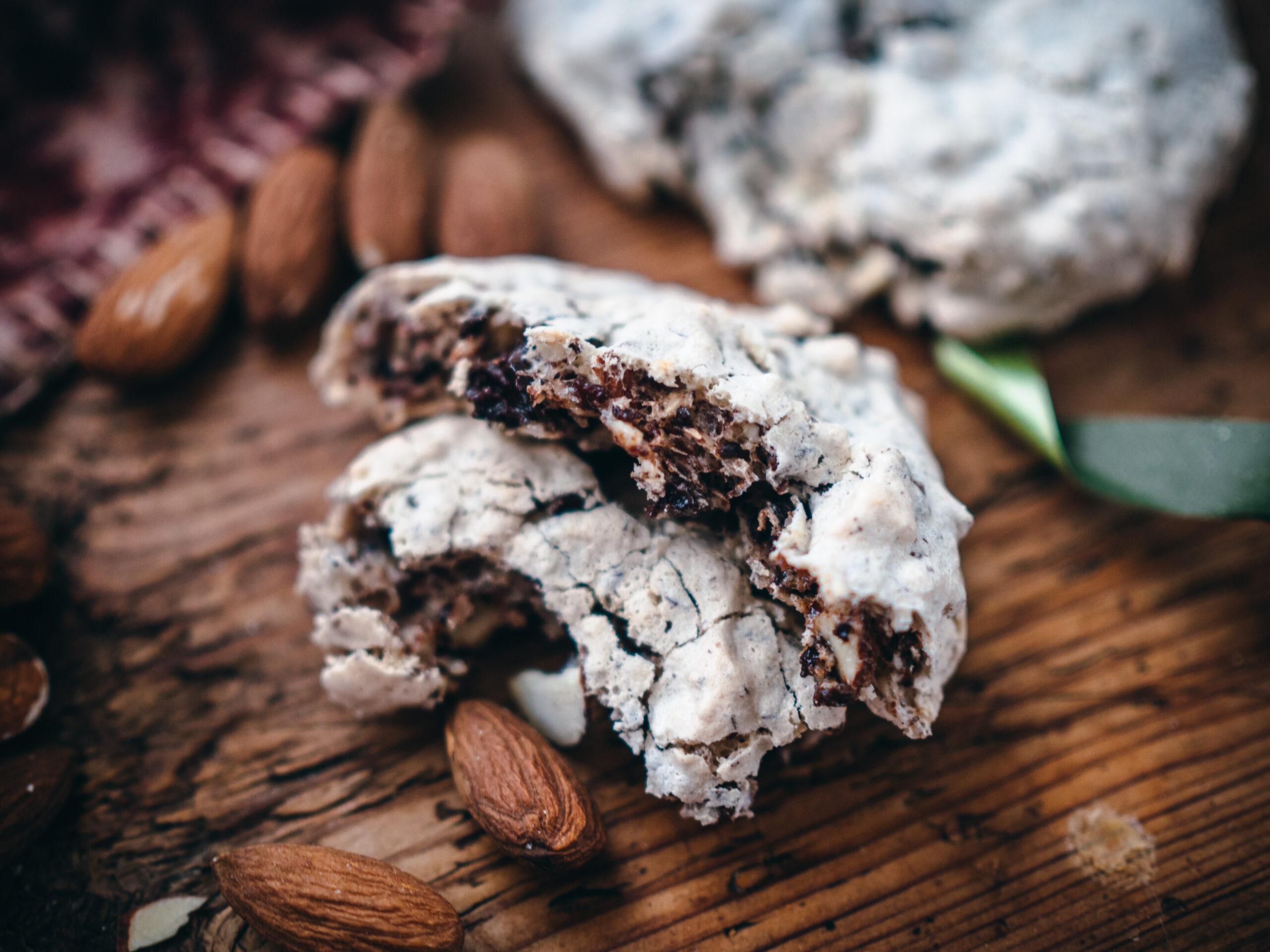
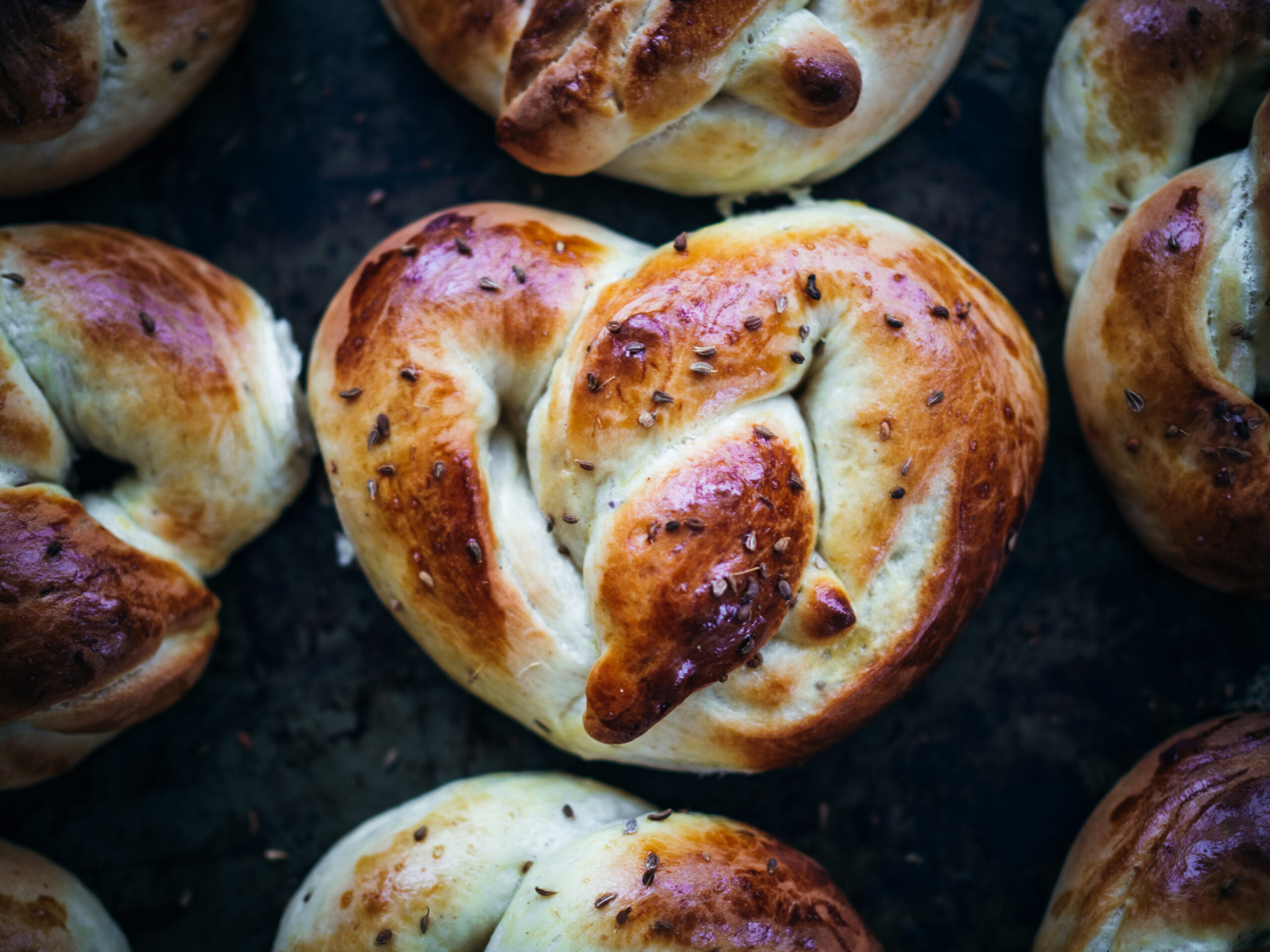
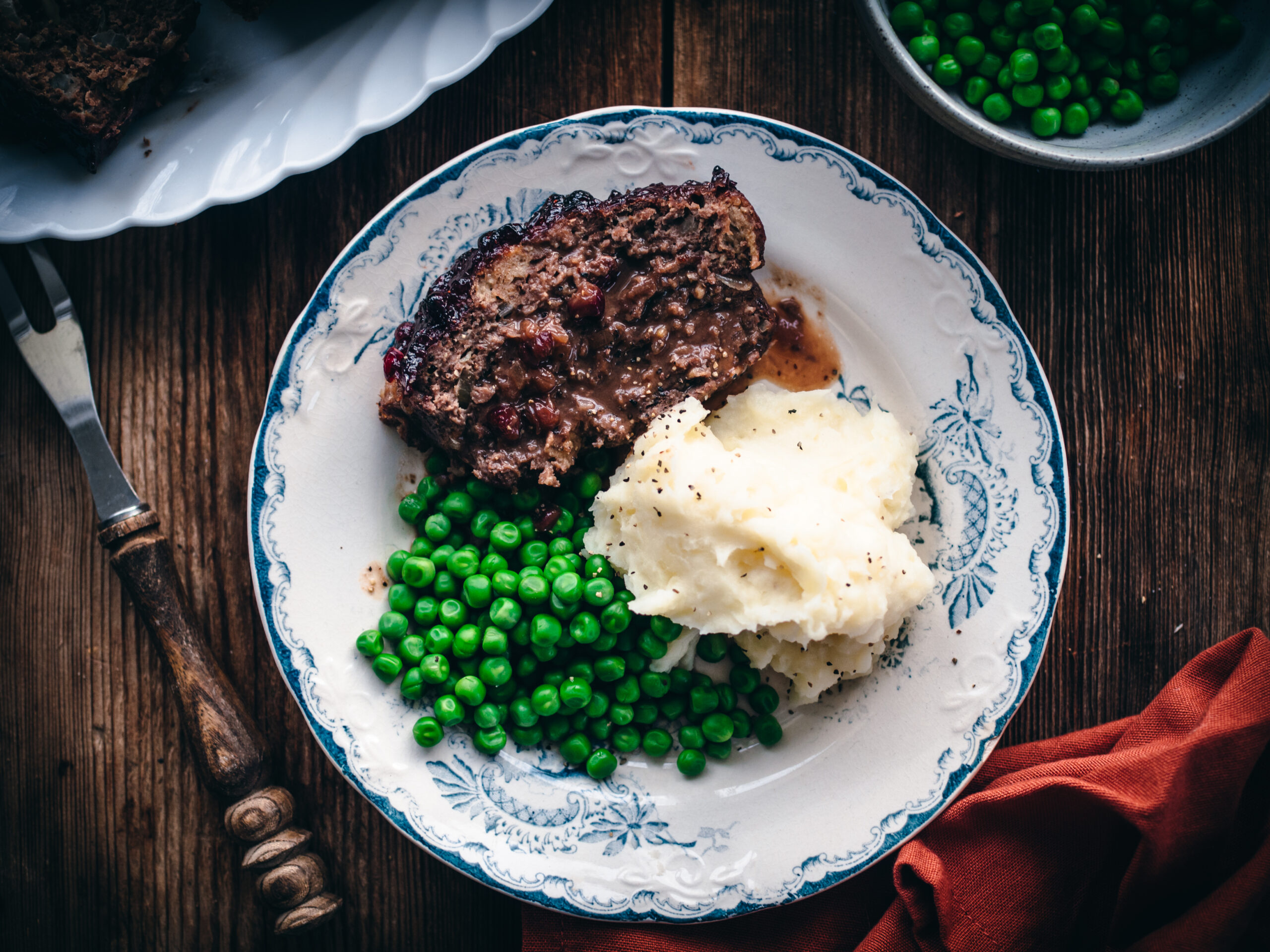
Add a comment